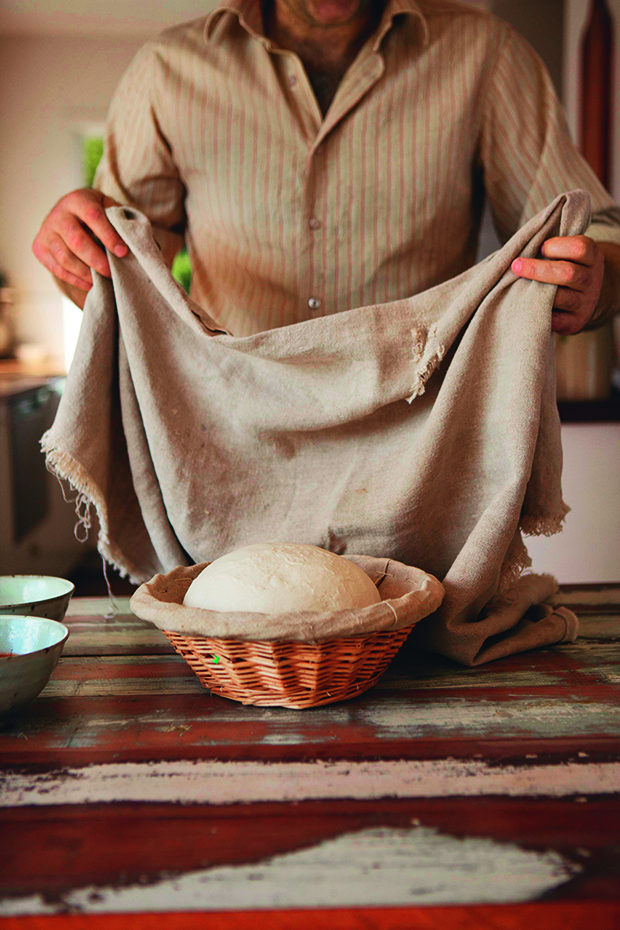Recipe: How to make pizza dough from scratch
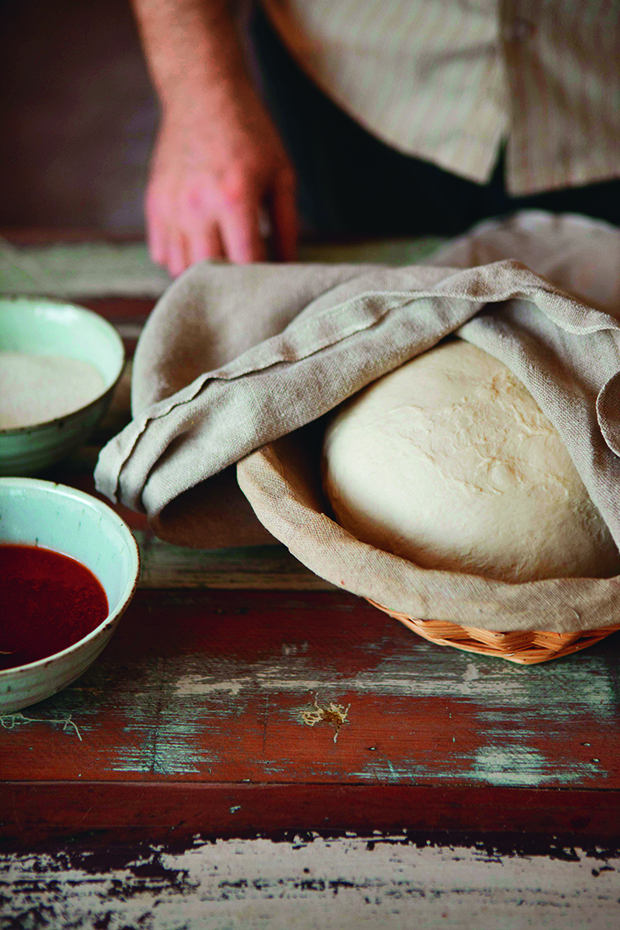
Take notes from pastry chef Clinton Davies and learn how to make the perfect pizza base.
Words and recipes: Clinton Davies Photos: Tom Powell Styling: Renée Davies
Pizza is a seasoned flatbread with its origins in the Mediterranean, where it was traditionally cooked on a large hot stone from the open fire and seasoned with wild herbs.
Much has changed but the flavour of pizza from a wood-fired oven still cannot be beaten. When accompanied by the smell of smoke and the flicker of flame, the earthy taste of food cooked with fire is one of life’s great pleasures. Whether you prefer a thick or thin crust, classic or elaborate toppings, there’s something to suit every palate and preference and experimenting with combinations is lots of fun.
Perfect Pizza Base
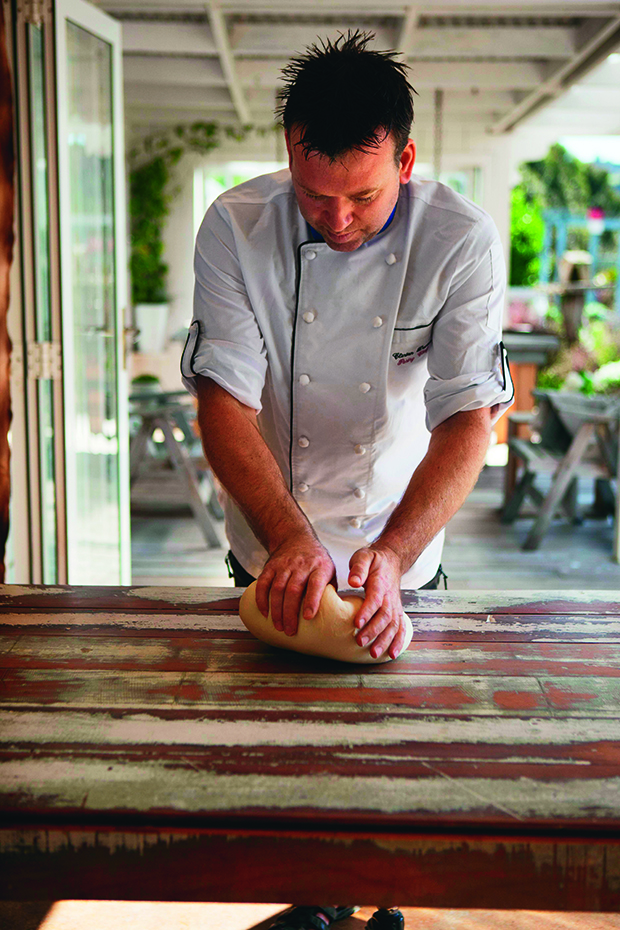
Using the right flour is key when making any type of bread. In this case, flour with a high gluten content is what you need for a relatively elastic dough. Pizza dough is made with only a few ingredients, so make sure you use the best to achieve the best results. We used organic flour, which is less adulterated than its processed counterparts, and is also a good option for nutritional value.
Makes: 3 medium-sized pizza bases
Ready in: 2 hours, including proving (cooking takes 3-5 minutes, depending on the pizza-oven temperature and dough thickness)
INGREDIENTS
300-350ml water
500g high-grade flour (organic if possible)
15g fresh compressed yeast (ask your local baker or at bakery in your supermarket), or 7g dried active yeast
25g olive oil
10g salt
METHOD
1. Consistency in the rising of dough relies on its temperature, starting with the water. Pizza dough should be prepared at 64°C. To estimate the optimum water temperature, take the temperature of the flour and kitchen and add the two together – then subtract this figure from 64°C to establish the water temperature. The amount of water will vary depending on the flour used – high-gluten baker’s flour, or high-grade flour, contains more gluten and may require more water. The dough shouldn’t be too soft as you’ll be adding oil – aim for firm but not too dry.
2. Add yeast to water then combine with flour to make an elastic dough – test elasticity by taking a small piece of dough and pulling it; the right elasticity is achieved when it can be stretched without breaking (see right). Add olive oil and salt, then knead by hand, or in an electric mixer with a kneading attachment, until the gluten is well developed (see How to Knead).
3. Place dough in a bowl to prove for 40 minutes until doubled in size (see How to Prove). For temperature control, place the bowl on a wood chopping board – you don’t want a cold stone bench cooling the dough.
4. When dough has doubled in size, knock back the dough by pushing your hand into the middle to remove the air. Divide dough into pieces that can be rolled to suit the size of your pizza pan or peel.
5. Place dough in a bowl covered with a clean tea towel for 10-15 minutes, then roll out to about 2mm for a thin, crisp base, or 5-8mm for a thick base. Don’t use too much flour when rolling dough as it will burn in the oven.
6. ‘Dock’ the dough by pricking it lightly all over with a fork to encourage heat to transfer through the dough as it cooks; it also reduces the likelihood of air bubbles, which can cause problems with toppings.
7. Leave the dough to rest again while you prepare your toppings. Turn to page 61 for tasty topping ideas.
HOW TO…
Knead
Whether done by hand or machine, kneading develops the gluten in the flour. If you were to look at a piece of dough under the microscope, you’d see a web of fibres holding it together – this is called the gluten structure. When the dough is well developed, the fibres are closely knotted and act like a net within the dough, trapping carbon dioxide, a by-product of the yeast-consuming sugars in the dough. It’s this trapped carbon dioxide that causes the dough to rise.
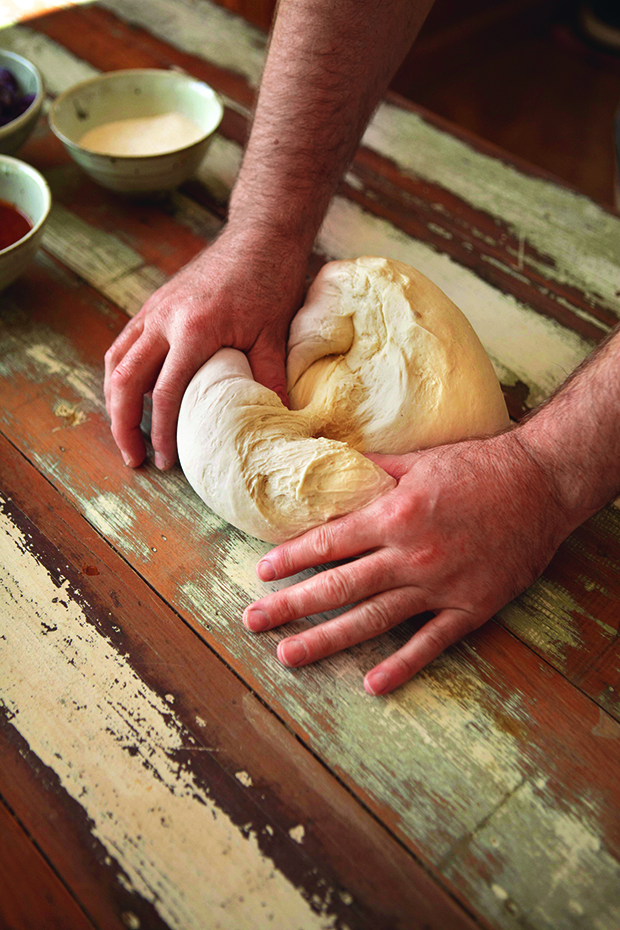
Gluten check
The best way to test the gluten structure is to take a piece of dough the size of a golf ball, allow it to rest for 30 seconds, then slowly and gently stretch until it becomes transparent, but doesn’t break. If the dough breaks and is still full of fibrous pieces, more kneading is required.
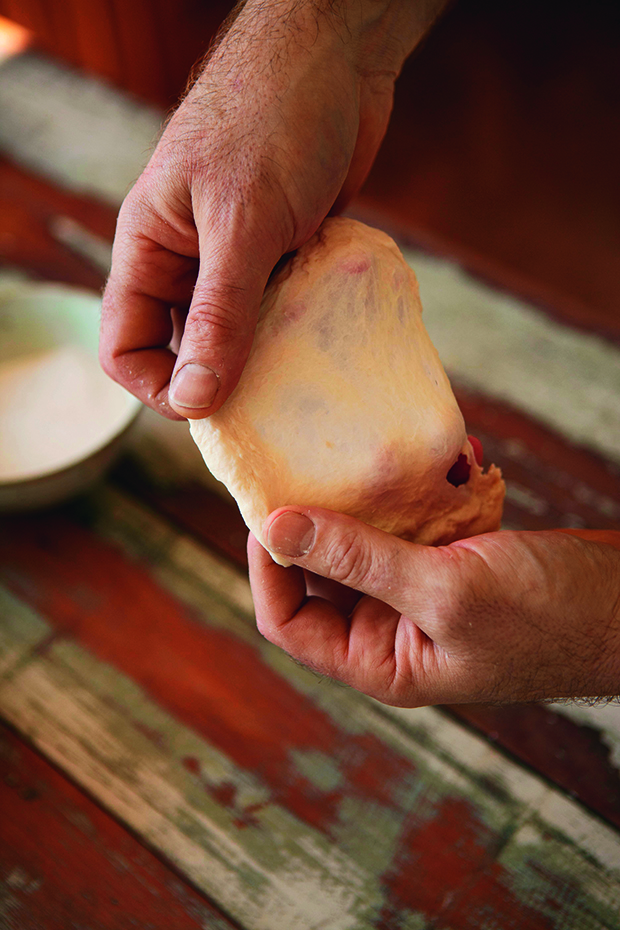
Prove
When you’ve finished kneading, place the dough in an oiled bowl and cover with a damp tea towel for 40 minutes. If you’re unsure whether dough is ready, test it by poking a damp index finger into the centre. If the dough collapses, it has over-risen and should be knocked back immediately. If the indentation springs back, the dough has not risen enough. If the indentation doesn’t spring back but the dough doesn’t collapse, it’s just right.
